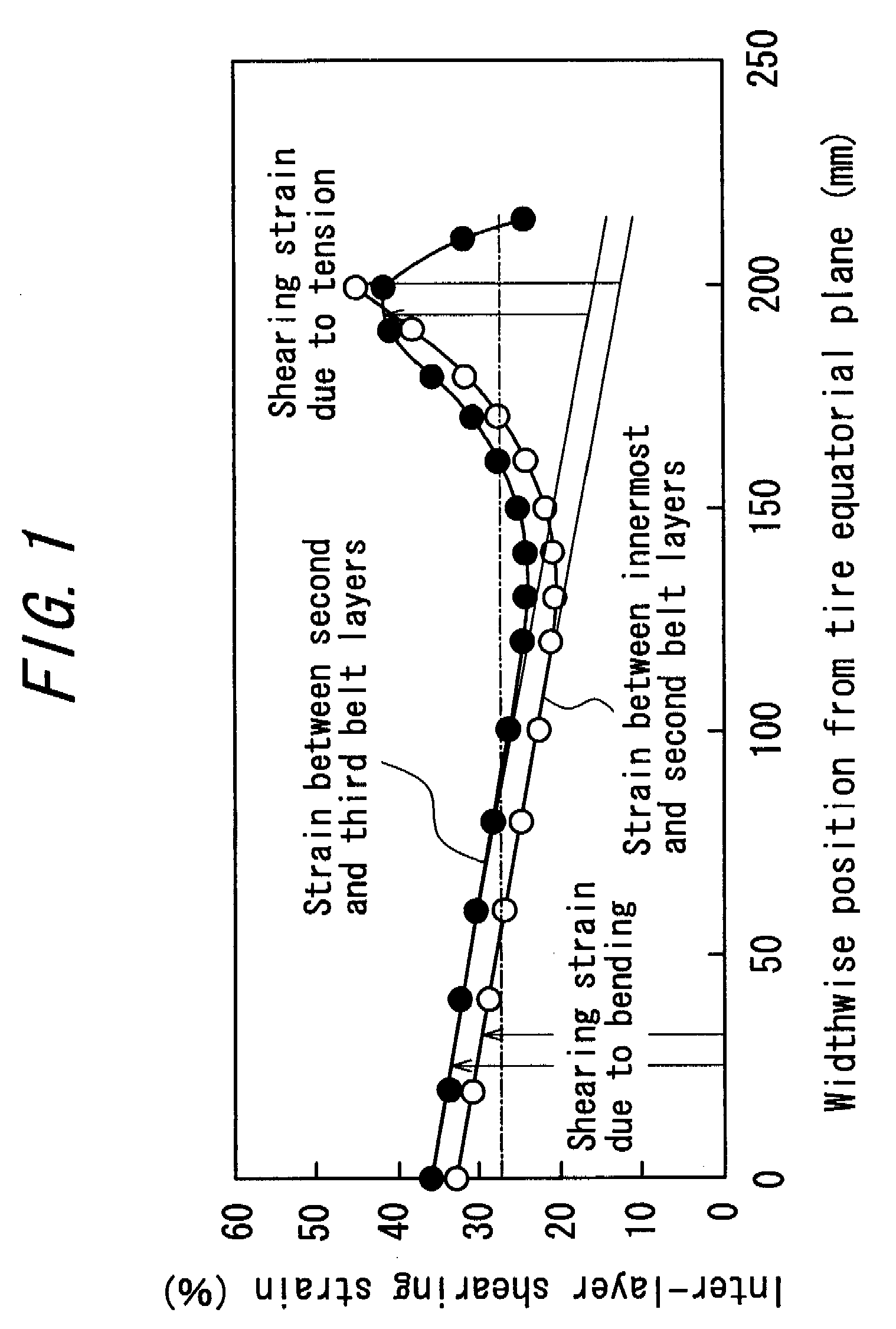Heavy-duty pneumatic tire
- Summary
- Abstract
- Description
- Claims
- Application Information
AI Technical Summary
Benefits of technology
Problems solved by technology
Method used
Image
Examples
example 1
[0083]There have been prepared test tires having a size of 4000R57, and six-layered belt structure and tread width as shown in FIG. 6, wherein the maximum projection height positions of the projections are situated at 78% positions on both sides of the tire equatorial plane X. The maximum projection height C of these projections were varied as shown in FIGS. 7(a) to 7(d) to evaluate the durability of the belt, and the results as shown in FIG. 8 were obtained. Incidentally, the diameter of the belt cords of the innermost belt layer was 2.5 mm.
[0084]Here, the evaluation was performed by mounting the test tires to a rim having a rim width of 29 inches, setting the inflation inner pressure as 700 Pa, and subjecting the test tires under loaded condition to rolling on a test drum having a diameter of 5.0 m, under the temperature of 30° C. and at a speed of 10 km / h. In this instance, the load weight was 150% of the weight as prescribed by TRA standards, and the lateral force applied to the...
example 2
[0089]Test tires were prepared to have the same basic structure as the test tires used in Example 1, wherein the maximum projection height of the innermost narrow belt layer 1B is 3 mm (=1.2×d1), and the third wide belt layer 3B is provided with projections 10 at locations corresponding to the side edges of the narrow belt layer 1B, 2B so as to be convex radially outwards, as shown FIG. 9. For these test tires, the durability of the belt was evaluated in the manner similar to Example 1. It has been revealed, as symbolically shown by circles (∘) and squares (□) in the graph of FIG. 8, that C12 and C23 could be reduced to 28 mm and 30 mm, respectively, and both CC12 and CC23 could be reduced to 0 mm.
[0090]Namely, this is based on the fact that, due to the provision of the projections 10 for the wide belt layer 3B, the side portions of that belt layer 3B have increased regions that are included in the compression side, making it possible to increase the difference in elongation / contrac...
PUM
| Property | Measurement | Unit |
|---|---|---|
| Angle | aaaaa | aaaaa |
| Angle | aaaaa | aaaaa |
| Angle | aaaaa | aaaaa |
Abstract
Description
Claims
Application Information
 Login to View More
Login to View More - R&D
- Intellectual Property
- Life Sciences
- Materials
- Tech Scout
- Unparalleled Data Quality
- Higher Quality Content
- 60% Fewer Hallucinations
Browse by: Latest US Patents, China's latest patents, Technical Efficacy Thesaurus, Application Domain, Technology Topic, Popular Technical Reports.
© 2025 PatSnap. All rights reserved.Legal|Privacy policy|Modern Slavery Act Transparency Statement|Sitemap|About US| Contact US: help@patsnap.com



